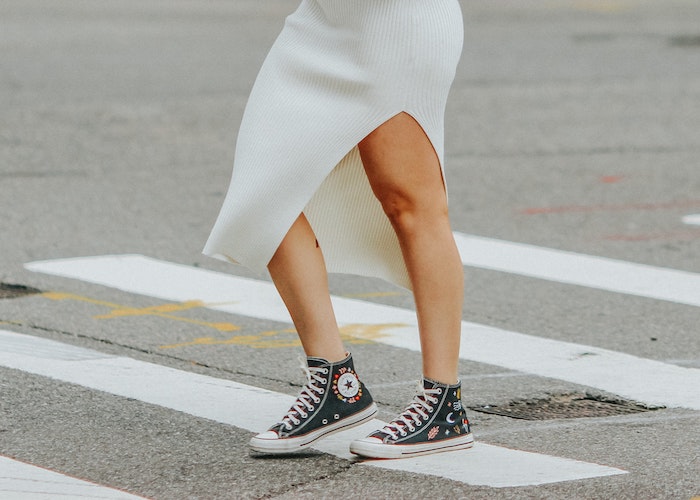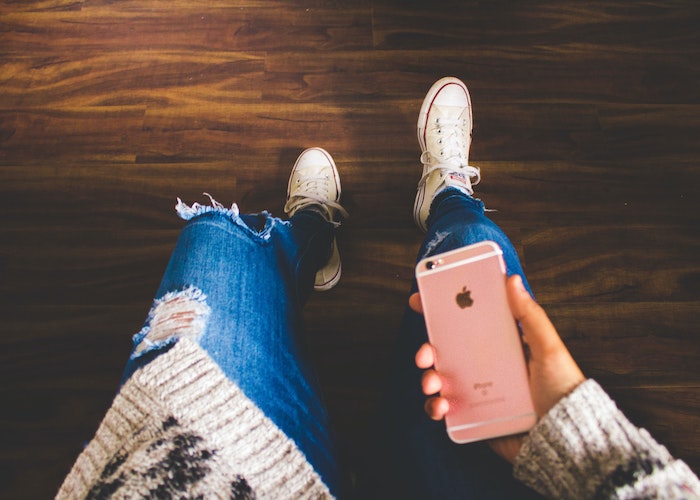8 Online Shopping Hacks That Are Worth The Extra 10 Minutes Of Effort

I hate going shopping.
I’m not sure what it is exactly, but I’m leaning towards the physical experience of it. Malls are gross and crowded, there’s never any parking, I feel weird going in and out of stores without buying anything…and if I do, I usually regret it pretty soon after.
I already mentioned my habit of buying groceries online, so it probably comes as no surprise that all my other shopping is online as well. That said, I’ve found several online shopping hacks that keep my bank account (and antisocial tendencies) happy, even when I want to get a little fancy. Here are first the online shopping hacks that I use before I go to buy something, then the ones I use when I’m actually ready to purchase.
1. Know Your Measurements
If you haven’t done this recently, measure yourself and mark these numbers somewhere you’ll remember to look next time you browse online. This will take most of the guess work out of ordering clothes off the internet. Sizes vary from retailer to retailer, designer to designer, garment to garment…but they’ll (almost) always give measurements online. Get a flexible tape measure and a friend, and get to work.
It really is this simple. I store these numbers on my laptop, and refer back if I’m trying to figure out what size to order. And if the sizing is odd, I’ll go by my largest measurement, and tailor it at home. Or, more realistically, just not order it.
2. Make a Wishlist
I’m guilty of keeping the ASOS app on my phone and idly looking at pretty dresses, but I rarely purchase anything. To be honest, I only actually buy nonessentials like clothing maybe once every three to five months or so. Instead, I’ll add them to a wishlist and/or cart, and then leave it alone.
This has two benefits:
- I get to revisit it with fresh eyes in a few days (or, let’s be real, months), and decide if I really like it more than I like having $X to put towards my downpayment or my travel fund
- Some stores use abandoned carts as triggers for email marketing campaigns, and will send a nifty coupon code my way to try and convince me to buy
Either way, if it ends up being something I do want to buy, it’s not an impulse, and likely will cost less thanks to that coupon code.
3. Set Alerts
If I really love something, but can’t justify spending so much, I’ll set a price alert. Basically, I’ll tag any item that I’d like to eventually buy, and get notifications when the price drops. Shoptagr is my go-to for this because of its convenient Chrome extension and email alerts, but it doesn’t work with every site. CamelCamelCamel is another favorite price tracker for those of us that buy everything on Amazon.
4. Target Your Search
This one is probably obvious, but I’ll say it anyway. I’ll usually only buy something only when I actually need something. If I know I need, say, cargo pants for a Kim Possible costume (because I’m super cool), that’s what I’ll look for, and that’s it.
That said, if:
S = Shipping costs
D = Cart minimum for free shipping – My current cart total
I add an item to get to free shipping only if D is less than S; in other words, only if that add-on item costs less than shipping would without adding it. I’ll find the cheapest thing that gets me to that limit, assuming the difference costs less than shipping would. That’s the only time I’ll divert from my list.
5. Coupon Codes
When I’m ready to actually start buying, I always look for coupon codes. It’s as easy as googling “[site] coupon code” and testing a few out, but I like to live life in the fast lane.
I use Honey, which has a Chrome extension that lets you know when they have coupon codes for the site you’re on. It’ll even run through those codes for you, and select the one that offers the most savings. It’s not perfect, but it’s fast and easy, and consistently finds odes that actually work.
6. Cash Back
Even though I don’t shop a lot, I’m always a fan of cash back. Every little bit builds up, and since starting with Ebates and Honey, I’ve gotten over $100 back either in the form of Amazon gift cards or through Paypal. Typically, these services will give anywhere from 2-15% cash back, depending on the retailer.
I will say, though, this one is a trade-off. These businesses offer cash back for shopping online in exchange for knowing what you bought. Remember — they’re making money with your information, otherwise they wouldn’t be giving you money for it. Personally, I’m okay with these sites tracking my purchases in exchange for cold hard cash, but I understand why someone else wouldn’t be. Each is opt-in (so they don’t see what I purchase unless I click the button), and I tend to use it every chance I get.
Honey’s cash back feature is called Honey Gold. They offer rewards for your purchase information in the form of Amazon gift cards. Here’s the kicker, though: even though each will partner with different retailers, sometimes they’ll overlap, and you can get both the Ebates rewards and Honey Gold for the same purchase.
7. Gift Cards
But wait, there’s more! I know, I know, just buy the stuff already. But bear with me. I’m trying to save you money here.
Once I have a cart total, coupons and all, I’ll grab discounted gift cards online. Gift Card Granny is probably the best of the bunch, aggregating available gift cards from different sites, and making it searchable by percent saved, total value, or even just whether it’s a physical gift card or something you can use online. I’ll then find the combination of cards that get me closest to my total, for the least amount of money, and make sure they are delivered via email same-day. Usually this will save me anywhere from 3-25%, depending on the cards available! Combined with the coupon codes and cash back, it makes one hell of a deal.
8. Returns
Even though you probably just got an awesome deal with all these tricks, there’s no guarantee that your new purchase is going to fit, feel, or look just right. Always make sure there’s a no-hassle return policy, so you can ship things back for free. I always think about my buys in terms of cost per wear (total cost divided by how many uses I’ll get out of it), and if I won’t wear it enough because it just isn’t what I wanted, it’s not worth it. I tend to hold onto something for a few days and decide if I really love it. If by the end of three or four days, I realize I won’t wear it, I send it back.
*****
Whew! Okay, that’s all of them. Yes, my hacks are probably overkill, but these tricks have saved me enough cash that they’re worth the extra 5-10 minutes. That said, it really comes down to two rules:
1. Only spend money on things that are worth it to you
2. Never buy full-priced
This post was originally published in two parts on a fledgling blog meant to help the author eliminate anxiety from her life, and to help organize her thoughts.
Image via Unsplash




